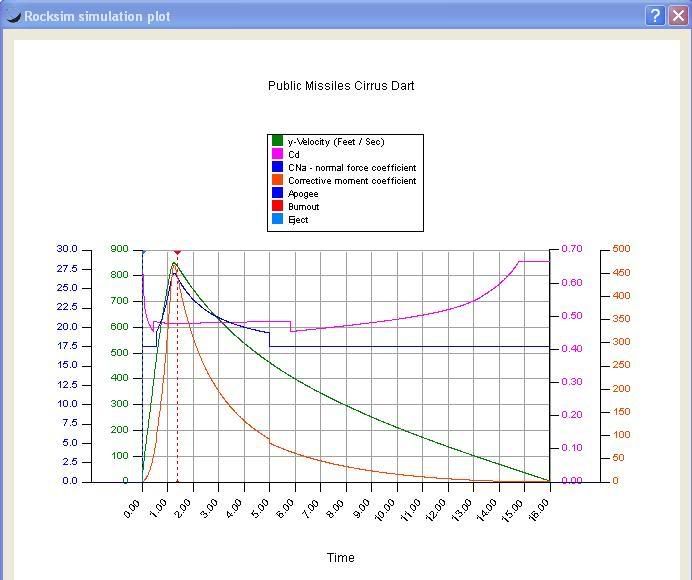I think we're both correct, but are looking at different constraints on the problem.
Once I get caught up on a few things, I'll see if I can locate the old papers that discuss various drag components.
Here's something to ponder.... if a lug (or button) contributes to drag and it is an asymmetrical feature (one side of the rocket), then it provides a torque that pitches the rocket. There will be an angle of attack where the corrective force of the fins/body balances the side torque of the lug. Even a small angle of attack adds significant drag. Depending on the masses and moments, there may be a dynamic condition where the rocket oscillates and rolls because of the asymmetrical disturbance. This further adds to the drag that was computed under static assumptions.
I understand what you are suggesting: that the rocket will fly somewhat sideways at equilibrium, and may pitch about seeking that equilibrium. In both cases additional drag is created. I would argue the following in response:
a) That the torque created by say a 2 inch launch lug stationed near the center of gravity will be relatively small. This applies to any force normal to the axial line, the torque for parallel axial forces is of course fixed at the body tube radius. Rail buttons that straddle the Cg would create offsetting torques. This is just good practice in any event to minimize the forces on the guide during contact with the rail/rod.
b) That at small angles of attack, the increase in drag forces is relatively small from 0 incidence.
c) That the relative magnitudes of the corrective force generated by a launch lug versus that of the lift created by the rocket flying at a small angle of attack can be appreciated from the following plot.
This is a rocksim plot of a stock PML Cirrus Dart flown on an H180. The Cd and the Normal force coefficient, Cna, are both dimensionless numbers that need to be multiplied by the term (1/2 pho*v^2*Aref) to calculate force. They are acting on the same longitudinal moment of inertia.
Even if we take the generous assumption that a lug would generate an additional 0.3 or so of Cd, you can see that this is a small number indeed compared to the minimum Cna.
From this, and the fact that its acting with only a body radius long lever arm, I don't believe the aoa at equilibrium (assuming zero roll rate) would amount to much. Moreover the increase in drag would be negligible as well.
Of course, all of this may be wrong--if so, I'm certain to know about it short order.

In the FWIW category, the lugged version ( 3 inches 1/4 dia) lost 150' of 5200'. This I know is likely an underestimate from the R&D reports you mentioned. The fins by the way came in at a total of 25% of the total Cd.






